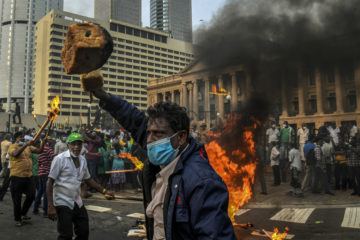
Kate Mackenzie and Tim Sahay on the Jain Family Institute’s new project:
What crisis?
A year ago, one might be forgiven for thinking there was a moment of relative calm for wealthy countries: a year of vaccinations had made the pandemic less acute, inflation hadn’t yet provoked interest rate hikes, and labor markets were strong. In the climate world, the energy transition was progressing and, after years of struggle in the UN climate diplomacy track, there was even some sign from rich countries that the poorest and most vulnerable states might be compensated for the loss and damage from climate-fueled disasters.
In reality, all was not well. As anticipated early in the pandemic, dozens of low-income and smaller middle-income countries were continuing to grind towards sovereign debt crises provoked by a sudden drop in foreign income and climbing healthcare costs. Creditors (the wealthy Paris Club countries, multilateral banks, bondholders, and China) had all failed to head off this debt crisis. Meanwhile, vaccines remained unavailable to many people in the poorest countries. Energy costs were climbing.
Then Russia’s invasion of Ukraine, and historic coordinated economic sanctions by Western governments, made everything much worse—in ways that even the world’s richest countries couldn’t avoid.
Energy costs in Europe were already high going into the winter of 2021. This was driven in part by the curtailment of China’s coal-fired generation leading to more demand for imported gas. In 2022, it’s spilled over into other countries: Europe and richer east Asia countries are now in a bidding war for limited gas supplies. Others have been priced out of the market entirely.
More here.
